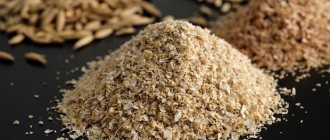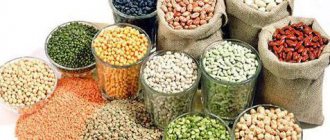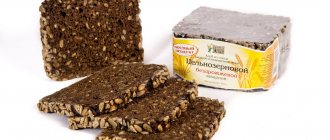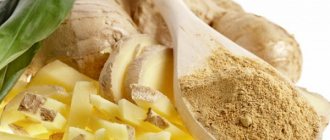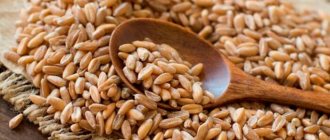This article was prepared by our beloved partners - the #GMfood - an online store of superfoods and craft eco-products.
Just for registering in the store you will receive 300 rubles to your personal bonus account and 2 more interesting gifts (Grab your gifts here)In the store's assortment you will find not only superfoods, but also healthy sweets, breakfasts, herbal teas, peanut butter, master classes for body health and facial beauty, and this is only a small part of the goodies and benefits!
Subscribe to Instagram #GMfood using this link and regularly receive new PP recipes with superfoods, see useful guides to the world of proper nutrition, and also look for gifts hidden under the link in the profile!
Soybean what is it
Soybean is an annual herbaceous plant, a species of the Soybean genus of the Legume family. Cultivated soybeans are grown in more than 60 countries on all continents. Soybean seeds, not quite accurately called soybeans, are a widespread product known as far back as the third millennium BC.
Source Wikipedia
Soybean is one of the most ancient cultivated plants. In China, soybean designs have been found on rocks, bones and turtle shells.
It serves as a raw material for many food products. Due to its high protein content and valuable nutritional components, it can be used as an inexpensive and healthy substitute for meat and dairy products.
Soybean is a waste-free crop. All its parts are processed into more than 400 types of different products.
Genetically modified soybeans: truth and myths
[blok_5_h2]
Interestingly, the plant in question was one of the first to be modified at the genetic level. And this causes understandable fears among people, since the use of GMOs on human DNA has not yet supposedly been studied. In fact, people should be much more concerned about the chemical composition of these beans than the risk of genetic modification.
The fact is that any product breaks down during digestion into simple substances that cannot affect human genetics, otherwise it would have been influenced by all types of animal and plant foods for thousands of years.
The danger of a genetically modified plant lies elsewhere. The use of soybeans is not limited to food production. It is used in animal feed. But the chemical composition of soy is poor in methionine, an essential amino acid that is needed for a balanced diet. Scientists have not been able to breed through selection a type of soybean that would contain this substance in sufficient quantities. Therefore, through genetic engineering, a gene from Bertholetia (these are the so-called Brazil nuts, which contain a high content of protein rich in methionine) was transferred into the soybean genome. Such genetic modification should not have any special consequences.
However, such a chemical composition can indeed cause problems, but of a completely different nature. The mentioned protein containing methionine is itself a strong allergen. So this plant is contraindicated for allergy sufferers. Currently, the company that grew this soybean has stopped producing this product.
However, even if it has not undergone genetic modification, the fruit of this crop itself contains allergens. For many years in Japan, which is the main consumer of this product, it was considered a major allergen, just as peanuts are considered a major allergen in the United States. This was due solely to the breadth of soybeans in the region. The expansion of the product into other markets has caused a surge in allergies to the product in those countries. The chemical composition of the product has something to do with this, but not genetic engineering.
Interesting facts about soybeans
Soy is the most common substitute for other, more expensive products. It is unpretentious in cultivation, so soybean raw materials are not expensive. The lowest varieties of soybeans grow up to 15 cm in height, the highest - up to 2 meters. Soybean fruits are beans that open with two leaves and usually contain 2-3 seeds. The fruits are oval, of varying convexity, mostly large, 4-6 cm long, resistant to cracking. The color of the fruit is yellow; occasionally there are forms with brown, black and green seeds.
In terms of protein content, it ranks first among all plants.
Every year, more than 300 million tons of soybeans are grown worldwide, ⅔ of this amount occurs in the USA and Brazil. China ranks first in soybean consumption.
The most popular soy product is soy sauce. There are many recipes for its preparation, but the classic recipe is made from soy, wheat, salt and water.
Soy is widely used by vegetarians. It is used as meat, cutlets, sausages, sausages and other products. At the same time, their taste is indistinguishable from natural products due to flavoring and aromatic additives.
Geneticists experiment with soybeans much more often than with other plants. The goal of their experiments is to improve its nutritional qualities and increase its resistance to the environment and other threats.
What varieties of soybeans are there?
Two criteria by which soybean varieties are mainly divided are ripening time and yield. According to the first indicator, this type of crop has the following varieties:
- early ripening;
- mid-season;
- mid-season;
- mid-late ripening.
In terms of yield, varieties are divided into high-yielding and medium-yielding.
In addition, agronomists always pay attention to the specifics of stem branching. If the lowest beans hang close to the ground (10 cm and below), the mechanical method of harvesting the fields becomes unsuitable for harvesting this crop. In this case, the harvest will be partially lost.
Also, when choosing a variety, pay attention to taste. Varieties are selected based on the oil and protein content in the seeds.
Resistance to adverse weather conditions, diseases and pests is also important for farmers.
It is important to know! Packages of certified soybean seeds must indicate the recommended growing zone for the crop. This is one of the most important criteria for choosing planting material.
What are the benefits of soybeans?
Soy is very popular due to:
- High yield;
- High – up to 50% – protein content;
- Content of vitamins A, E, C, H, group B;
- The content of essential amino acids, essential polyunsaturated fatty acids, microelements, including iron, potassium, calcium, iodine, phosphorus.
Soy is recommended to be consumed to prevent cardiovascular diseases and osteoporosis. It is a real find for vegetarians due to its high protein content.
Soy-based products are useful for people with diabetes, cardiovascular diseases, gastrointestinal problems, and musculoskeletal diseases.
Regular consumption of soy reduces the risk of developing dysbiosis and intestinal cancer. Helps speed up metabolism and reduce cholesterol.
Soybeans are quite high in calories - 381 kcal per 100 g of product. To reduce its calorie content, it can be sprouted. It allows you to quickly saturate your body with healthy plant proteins, fats and carbohydrates.
Nutrients contained in soy
Soy products are a valuable source of various nutrients. For example, 1 cup (155 grams) of edamame contains:
- protein – 16.9 g;
- carbohydrates – 11.5 g;
- fat – 8.1 g;
- fiber – 8.1 g;
- vitamin C – 16% of daily intake (RDI);
- vitamin K – 52% of the SNP;
- thiamine – 21% of SNP;
- riboflavin: 14% of DV;
- folates – 121% of the SNP;
- iron – 20% of SNP;
- magnesium – 25% of SNP;
- phosphorus – 26% of SNP;
- potassium – 19% of SNP;
- zinc – 14% of SNP;
- manganese – 79% of SNP;
- copper – 19% of SNP.
Soy contains small amounts of vitamin E, niacin, vitamin B6 and pantothenic acid.
Benefits of soy for women
Soy contains substances that act on the body in the same way as estrogens. They compensate for the deficiency of the female sex hormone. And when there is an excess of estrogen, they suppress its excessive activity.
Regular consumption of soy reduces the risk of developing breast cancer. Soy is rich in lecithin, which prevents fat deposition and helps fight excess weight. Soy products reduce menopausal symptoms.
Doctor says
Anastasia Mertsalova
The combined opinion of doctors on this issue
Menopause is a period of physiological restructuring of the body, characterized by the extinction of the function of the reproductive system, which occurs in connection with age-related changes.
Eating sprouted soybeans helps cleanse the body of toxins and waste. To germinate soybeans, you need to soak them for 6 hours, then rinse and cover with gauze. It is necessary to ensure that the beans are constantly moist. Sprouts will appear on the 2nd day. They can be consumed after 3-4 days.
Sprouted soybeans contain vitamins, enzymes, and biologically active substances necessary for the normal functioning of the body. It contains 30% more fiber than wheat.
Soy asparagus and other strange soy products
When soy milk is heated, foam forms on it. They are carefully collected, dried, called yuba or fuju, and sold to unsuspecting Russians under the name “soy asparagus” .
There have always been stories with soybeans that have led to humanity having strange foods today. So in the 11th century, a detachment of Japanese samurai from the Minamoto clan was attacked while preparing feed for horses. The samurai cooked soybeans, which had to be quickly put into bags made of rice straw. No one could have imagined then that the bacillus lived in the bags. Because of it, the beans began to decompose and smell of ammonia, and sticky threads formed around the bottom, which stretched like hardening caramel after the spoon. Or chopsticks in their case. Anyone would have thrown it away, but samurai were not like that. We tried it and liked it. They continued to wrap the beans in hay. Today we know this product under the name natto .
Indonesia is the birthplace of another popular product today - tempeh . This is also a fermentation product that looks like a briquette of nougat with nuts. To make one, you will need Rhizopus oligosporus starter and some boiled soybeans, which at 30°C grow well with mycelium and mold. Tempeh has a complex nutty-mushroom-meat flavor, so it is perfect for both lean soups and fatty meat dishes.
Is soy harmful to health?
Soy should not be consumed by people with urolithiasis, as it contains oxalates, which stimulate the formation of new stones. And also for people who are allergic to it, with individual intolerance, during pregnancy.
Excessive consumption of soy can accelerate the aging process, cause eczema, dermatitis, asthma, conjunctivitis.
Excessive consumption of any product can lead to health problems.
Soy has a strimogenic effect. The substances contained in it can provoke disturbances in the functioning of the endocrine system and the thyroid gland. The oxalic acid contained in its composition can contribute to the development of urolithiasis.
Soy and its possible negative health effects
Although soy has several health benefits, its effect on other conditions is unclear.
Effect on breast cancer unknown
Soy contains isoflavones, which act as estrogen in the body. Since many breast cancers require estrogen to grow, it can be assumed that soy may increase the risk of developing breast cancer.
However, this is not the case in most studies.
In fact, according to one review, higher soy intake may be associated with a 30% reduced risk of breast cancer in Asian women.
However, for women in Western countries, one study found that soy consumption had no effect on the risk of developing breast cancer.
This difference may be due to the different types of soy consumed in the Asian diet compared to the Western diet.
Soybeans are typically consumed whole or fermented in Asian diets, whereas in Western countries soybeans are mostly processed or come in supplement form.
One review noted that soy isoflavones undergo structural changes during fermentation processes that can significantly increase absorption.
Additionally, an animal study also found that fermented soy milk was more effective than regular soy milk in inhibiting the growth and spread of breast cancer tumor cells in rats.
Therefore, fermented soy may have a greater protective effect against breast cancer compared to other processed soy products.
In addition to protecting against breast cancer, soy has also been linked to longer survival after a breast cancer diagnosis.
In a review of five long-term studies, women who ate soy after diagnosis were 21% less likely to have cancer recur and 15% less likely to die than women who did not eat soy.
Effect on thyroid function
Soy contains goitrogens, substances that can negatively affect the thyroid gland by blocking the absorption of iodine.
Some studies have shown that some soy isoflavones, including genistein, may block the production of thyroid hormones. However, these results are largely limited to in vitro and animal studies.
On the other hand, studies on the effects of soy on thyroid function in humans suggest that it may not have a significant effect.
One review of 18 studies found that soy supplements had no effect on thyroid hormone levels.
Although it slightly increased thyroid-stimulating hormone (TSH) levels, it is unclear whether this is significant for people with hypothyroidism.
However, according to another older review of 14 studies, soy had little effect on thyroid function.
The authors concluded that people with hypothyroidism do not need to avoid soy if their iodine intake is adequate.
Additionally, another randomized trial found that consumption of 66 mg of soy phytoestrogens per day had no effect on thyroid function in 44 people with subclinical hypothyroidism.
Effect on male sex hormones
Because soy contains phytoestrogens, men may be concerned about including it in their diet.
However, research does not show that soy negatively affects testosterone production in men.
In a review of 15 studies in men, consumption of soy products, protein powders, or isoflavone supplements up to 70 grams of soy protein and 240 mg of soy isoflavones per day had no effect on free testosterone or total testosterone levels.
Moreover, soy may reduce the risk of prostate cancer in men.
In a review of 30 studies, high soy consumption was associated with a significantly lower risk of developing the disease.
Most soy contains GMOs
More than 90% of soybeans produced in the United States are genetically modified.
There is much controversy about the safety of genetically modified organisms (GMOs). Longer scientific studies are needed to determine their effects on people and in what quantities they are safe.
Additionally, most genetically modified soy products are tolerant of the pesticide glyphosate, which is controversial.
Some GMO soy products have been found to contain glyphosate residues and have a poorer nutritional profile compared to organic soybeans.
So to avoid GMOs and glyphosate exposure, stick to organic soy.
Impact on Digestive Health
Several recent animal studies suggest that certain compounds found in soy may negatively impact digestive health.
Specifically, soy agglutinins are a type of antinutrient that is associated with several negative side effects.
According to one review, soy agglutinins may affect digestion by affecting intestinal structure and barrier function.
They can also interfere with the health of the microbiome, which is a group of beneficial bacteria found in the digestive tract.
Another animal study found that soy agglutinins may increase intestinal permeability, making it easier for substances to pass through the lining of the digestive tract into the bloodstream.
Soybeans may also contain several other antinutrients, including trypsin inhibitors, α-amylase inhibitory factors, phytates, and more.
Fortunately, cooking, sprouting, soaking, and fermenting soy products before consumption can help reduce antinutrients and improve digestibility.
Summary: Animal studies show that soy negatively affects breast cancer, thyroid function and male hormones, but human studies show this is not the case. Besides organic soy, most soy is genetically modified. Most cooking methods can reduce the amount of antinutrients.
Application
Soybean is the most common crop among legumes and oilseeds. It is widely used as a fodder, food and industrial crop. It is used to prepare butter, milk substitute, fermented milk products, and flour. Soy flour is used as a protein supplement.
Soy is used in the preparation of sauces, sweets, chocolate, yogurt, ice cream, drinks, tofu, sausages, and pates. Soybean oil has a slight nutty flavor. It is used for dressing salads and for frying.
Dry soybeans require pre-soaking for 12-15 hours. After this, it must be washed and cooked for 3 hours.
Products rich in soy
Today, soy can often be found in inexpensive sausages, where it is added as a cheap ingredient that increases nutrition. However, the level of this component is so low that such sausage cannot be classified as a product with a high content.
- soy sauce;
- tofu cheese;
- soy milk;
- soybean seed oil;
- Soy meat;
- chocolate, in the production of which soy beans are used instead of cocoa beans;
- pastes: miso, twenjang, gochujang;
- boiled edamame beans.
Recipes with soy
You can make many delicious, nutritious and satisfying dishes from soybeans.
Soy meat in the oven
Required Ingredients:
- 150 g soy meat;
- Bell pepper;
- 300 g champignons;
- Parsley;
- Spices, salt - to taste;
- 2 tbsp. l. olive oil;
- 5 tbsp. l. soy sauce.
Pour boiling water over the soy meat for a few minutes. Cut the peppers and champignons into strips. Place in a baking dish, salt, add spices, sauce, butter. Mix.
Bake for half an hour in an oven preheated to 200 degrees. Then turn off the oven and let it brew for 10 minutes. Before serving, sprinkle with parsley.
Soy cutlets
To prepare them you will need:
- 200 g soy meat;
- 2 eggs;
- Onion;
- 1 tbsp. l. soy sauce;
- 1 tbsp. l. mayonnaise;
- 4 tbsp. l. wheat flour;
- Salt, pepper, spices - to taste.
Soak the soy meat in hot water for 10 minutes, then grind it. Add fried onions, eggs, mayonnaise, soy sauce, spices, and salt to the minced meat. Mix. Add flour and mix well again.
Form cutlets, roll in flour and fry until golden brown.
Marinated soy meat
We will need:
- 300 g soy meat;
- 100 ml soy sauce;
- 100 ml table vinegar;
- 150 ml vegetable oil;
- Garlic;
- Glass of water;
- 100 g sugar;
- 1 tsp. ground black and red pepper, turmeric, cilantro, coriander.
Cook soy meat for 15 minutes. Meanwhile, prepare the marinade: bring water to a boil, add sugar, pepper, spices, vinegar, oil and let it boil again. After this, mash the garlic and add it to the marinade after boiling along with soy sauce.
Pour the sauce over the boiled soy meat and place it under light pressure so that it does not float up. After cooling for a day, put it in the refrigerator. Ready meat is suitable for salads and as a snack.
Soy meat kebab
Required Ingredients:
- 0.5 kg soy;
- Lemon;
- 2 tomatoes;
- Onion;
- Green onions;
- Bay leaf;
- 5 pieces. sweet pea;
- 3 tbsp. l. vegetable oil;
- Salt, pepper - to taste.
Bring the water to a boil, add soy meat, bay leaf, sweet peas, salt and cook for 10 minutes. Then place it in a colander to drain excess liquid. Then put it in a bowl and add ground black pepper.
Cut the onions into rings. Cut the green onions into rings and mix them with the onions. Add half the onion to the soy meat. Sprinkle the mixture with lemon juice.
Add sliced tomatoes and vegetable oil to the resulting mass and place in a cool place for 2 hours to marinate. When the meat is ready, sprinkle it with the second half of the onion mixture, put it on skewers and fry it over coals.
Salad with tomatoes
We will need:
- 200 g soy meat;
- Onion;
- 4 tomatoes;
- Tofu cheese;
- Green onions;
- Basil;
- 2 tbsp. l. soy mayonnaise;
- 1 tbsp. l. vegetable oil;
- Salt, pepper - to taste.
Cut the cheese and tomatoes into cubes, chop the onion. Fry the cheese until golden brown. Soak the soy meat in hot water for 10 minutes. Fry the remaining ingredients except green onions. Then add cheese, herbs, mayonnaise, salt and pepper.
You can eat it warm or cold.
Soy burgers (burger patties)
To prepare them you will need:
- 50 g soy meat;
- 1 tsp. dry cream;
- 2 tbsp. l. oatmeal;
- 1 tsp. flaxseed flour;
- 100 ml water;
- 2 tbsp. l. vegetable oil;
- Salt, spices - to taste.
Soak the soy meat for 10 minutes in hot water, then grind it. Add cream, oatmeal, flaxseed flour, salt, spices. Pour in warm water, stir and leave for 5 minutes to swell.
Form burgers, roll in breadcrumbs and fry until golden brown.
Soy meat
We will need:
- 250 g soy;
- 100 g prunes;
- 2 tbsp. l. soy sauce;
- Carrot;
- 2 cloves of garlic;
- Onion;
- 3 tbsp. l. lemon juice.
Bring the water to a boil and cook the soy meat for 10 minutes. Then drain the water, cut the meat into pieces and fry until browned. After this, add chopped onion, carrots cut into strips and fry until the carrots become soft. Add the garlic passed through the press, mix and fry for another minute. Then add soy sauce, lemon juice, prunes cut into pieces, mix and fry for 2 minutes over low heat.
Soy goulash
Required Ingredients:
- 250 g soy meat;
- White radish;
- 3 carrots;
- 3 cloves of garlic;
- Onion;
- Bell pepper;
- 2 tbsp. l. soy sauce.
Pour hot water over the soy meat for 10 minutes, then drain the water and cut the meat into pieces.
Three radishes and carrots on a grater. Cut the pepper into cubes, chop the onion.
Fry the onion in a frying pan, gradually add the remaining vegetables, soy meat, soy sauce and fry over low heat for 10 minutes. Add spices, garlic.
Soy steak
To prepare it you will need:
- 200 g soy meat;
- Bell pepper;
- Onion;
- Parsley;
- 2 g soda;
- Spices.
Boil the soy meat in boiling salted water until tender. After that, put it in a colander to drain the water.
Sauté the onion until golden brown. Then add soy meat and fry for 5 minutes with constant stirring. Cut bell pepper into cubes. Combine soy meat, onion, pepper, soda, parsley, grind spices in a blender and put in the refrigerator for an hour.
From the resulting mass we form steaks, place them in a greased baking dish and bake in an oven preheated to 180 degrees until golden brown. Before serving, garnish with parsley.
Hairy beans
Edamame is a green bean that can often be seen in establishments today. They are served directly in the pods as a snack. In Russia they began to be used relatively recently, but in Japan the first mention dates back to 1275, when a monk thanked one of the parishioners in a letter for the gift of edamame left in the temple. In China they are called maodou, which literally translates to “hairy bob”. But it was the Japanese version of the name that stuck with us. Boil them in salted water, fry them in olive oil with chili and garlic, sprinkle with coarse salt and serve.
Customer reviews about soy products
What do customers say about soy products?
Feedback on the forum
Feedback on the forum
Feedback on the forum
Feedback on the forum
Feedback on the forum
There are a lot of reviews and, basically, they are all positive.
Soy for men
It is not recommended for men to use soy products when sexual function begins to decline, as soy will be harmful. Such ingredients accelerate aging and also impair sexual activity. Therefore, these dishes are not recommended for men over 40 years of age.
For the young adult male population, soy products can help gain muscle mass because they contain phytoestrogens, the main condition being exercise. Soy products contain a lot of protein and amino acids, so with constant consumption, you can activate and support the preservation of protein rather than its destruction. That is why the Japanese, although not big, do not look weak. To obtain greater benefits, it is recommended to fortify soy foods with iodine.
Structural modification of soybean proteins as a promising bio-and nanotechnology
PHOTO: Pulse of the agricultural market : https://agrostalker.blogspot.ru
M.L. Domoroshchenkova (GNU VNIIZh Rosselkhozakademii)
D. Hayes (Hayes General Technologies, Israel)
Yu.A. Shushkevich (Kuban Soy Concentrate LLC)
Introduction to the problem
Solving the problem of protein deficiency, one of the global problems facing humanity, is impossible without the use of raw materials of plant origin, primarily obtained by processing the seeds of oilseeds and leguminous crops. In this context, soy proteins have traditionally played a leading role. The high content and nutritional value of soy protein with developed technologies for high-protein products - soy flour, concentrates and isolates - have ensured their widespread use in the food industry and in human nutrition. In 2005, global consumption of soy isolate was 350 thousand tons, soy concentrate 500 thousand tons[1]. According to the forecast of LMC International Ltd, one of the leading British-American consulting companies in the food industry and agricultural markets, by 2020 the global market for soy isolates will grow to 1.6 million tons, soy concentrates - to 5.6 million tons. It is predicted that up to half of the casein and caseinates market and part of the whey protein market may be replaced by soy protein products[2].
Food grade soy proteins have a variety of uses. Thus, to compensate for the deficiency of animal proteins, the problem of which is especially acute in developing countries, it is sufficient to use soy flour, concentrate and isolate produced using classical technologies known since the mid-20th century. At the same time, to meet the demand for protein ingredients with developed functional and technological properties and improved medical and biological characteristics, new technological solutions are needed. In the last 10-15 years, the preventive and therapeutic properties of soy peptides, flavonoids, oligosaccharides and other phytochemical compounds contained in soybean seeds and their processed products have been studied and confirmed. In this regard, the agenda arose the question of activating the corresponding biologically active factors in mass-produced protein products, increasing their specificity and creating industrial technologies for their extraction, purification and concentration.
Structural modification of proteins
One of the promising and cost-effective areas for developing and improving the characteristics of food proteins is their structural modification.
The first mention of the structural modification of soy proteins dates back to the 1940s, when research was conducted in the United States to obtain heat-resistant foaming agents for the navy. For this purpose, enzymatic hydrolysis of soybean flour was used at low pH values (2.0-3.5), which resulted in the formation of polypeptides with a molecular weight of at least 14,000 Da. Before the advent of synthetic surfactants, “bean soup” was considered the best foaming agent in terms of foaming power and resistance to settling under high temperature conditions[3].
Today, the structural modification of soy protein compounds can be understood as the production, in the process of controlled destruction and/or targeted chemical, enzymatic or physical modification of the original soy protein biopolymers or their hydrolysis products, of new protein derivatives, including lower molecular weight proteins and polypeptides with improved or fundamentally improved new functional and medical-biological properties and with changed physico-chemical characteristics.
The term “structural modification of protein compounds” is still quite rare in domestic scientific publications today; the more general definition of “protein modification” or, as a special case, “protein hydrolysis” is usually used, while in foreign scientific literature the term “structural modification of protein” is widely used[4].
The structural characteristics of soy proteins are quite well studied[5]. Soy proteins can be divided into groups of polypeptides that differ in molecular weight. Depending on the rate of sedimentation, they are conventionally divided into 2S, 7S, 11S and 15S fractions. In turn, each fraction is a complex mixture of proteins that differ in their characteristics.
The main fractions that determine the functionality of soy protein are 7S β- and g-conglycinins (MW 150-175 kDa) and 11S-hycinin (MW 320-350 kDa), which account for more than 80% of total proteins .
During Laemli electrophoresis, glycinin and conglycinins are broken down into individual polypeptides:
- c-conglycinin: b' – 80 kDa, b – 76 kDa, c – 50 kDa;
- g-conglycinin: 66-65 kDa;
- glycinin: acidic subunits – 45-37 kDa, basic subunits – 22-19 kDa.
Enzymatic hydrolysis is used as the main tool for the controlled destruction of soybean globulins, which can be supplemented by membrane filtration[6], homogenization, emulsion extraction[7], isoelectric focusing and industrial liquid chromatography[8]. In some cases, structural modification can be carried out through plastein synthesis reactions, which make it possible to change the functional properties or improve the amino acid composition of the product (for example, increase the content of one or more amino acids, remove “bitter” amino acids) [9]. The final stage of the technological process (if the product is not sold in liquid form) is spray drying of the product at special temperature conditions.
Structural modification involves a significant change in the physical and chemical characteristics of a protein, revealing or forming new properties. Below is a brief description of how and in what ways the methods used in structural modification affect the properties of the final products.
During hydrolysis as such, the molecules of individual polypeptides are shortened, new chemical bonds are released and activated, in particular, SH bonds, etc., “release” or exposure of individual hydrophilic or hydrophobic groups to the surface, as a result of which the resulting compounds have new, different from the original substrate, solubility properties, fat emulsification, moisture and fat retention, antioxidant properties, rheological characteristics.
The peptides and polypeptides obtained in the process of structural modification are classified in the nanorange from 5 to 100 nm.
The high substrate specificity of the enzymes used in hydrolysis allows reactions to be directed along strictly defined bonds, achieving the production of certain groups of peptides and polypeptides, which can subsequently be separated with the required degree of purity.
In addition, along with hydrolysis reactions, when using some enzymes, cross-linking reactions of proteins can be catalyzed - thus, in the process of hydrolysis catalyzed by transglutaminase, the resulting “cross-links” between lysine and glutamine residues in the polypeptide chain enhance gelling properties and can be used for the manufacture of microcapsules for immobilized enzymes[10].
The use of alkaline reagents during hydrolysis makes it possible to obtain proteinates, the most common of which are sodium, calcium and potassium proteinates; which have different functional properties. In the work of L.V. Gaponova, it was shown that the fat-holding and water-holding abilities are maximum for potassium soy proteinates, the foaming ability is for sodium proteinate, and the fat-emulsifying ability is for calcium soy proteinates.[11] That is, there is a pronounced influence of alkali and alkaline earth metal cations on the functional properties of soy protein proteinates.
It is known that the conformation of a protein affects its physicochemical properties. Protein conformation is sensitive to amino acid sequence features and solvent characteristics. The folding of a polypeptide during the formation of a spatial structure is determined by thermodynamic factors. For water-soluble proteins, the majority of non-polar residues are located inside, and the majority of polar residues are on the surface of the globule in contact with the solvent. This achieves minimization of the free energy of the protein structure under given conditions and properties of the solution. In general, in globular proteins, hydrophobic residues are located on the inside, and hydrophilic residues are mostly on the surface. Therefore, native globular proteins usually have high solubility. In the process of industrial production of purified protein fractions, as a result of denaturation, structural changes occur in the protein, leading to a decrease in its solubility and a change in functionality. Thus, heating protein solutions leads to an increase in the proportion of hydrophobic areas on the surface [12]. In the process of hydrolysis and physical influences - shear deformations during homogenization - a change in the spatial structure occurs with an increase in the specific conformational energy of protein particles. As a result of these processes, nonpolar hydrophilic residues (R-groups of serine, threonine, tyrosine, cysteine, glycine, etc.) are more exposed to the surface, which increases the solubility[13] of these particles. The formation of protein particles with a predominance of hydrophobic R-groups (alanine, leucine, isoleucine, valine and proline) makes it possible to obtain fractions with increased fat-emulsifying characteristics. We also note that according to Taiwanese scientists, even without expensive separation according to the predominant amino acid residues, soy peptide concentrate is an excellent emulsifier and can be emulsified with water and fat in a ratio of 1:7:1 while maintaining a stable emulsion, thereby completely replacing lecithin as an emulsifier [14]. In other words, the resulting product with protein nanoparticles of both types can have a balanced solubility property and act as an emulsifier.
The already mentioned shear deformations during homogenization at high pressure not only physically ensure the destruction of protein globules and polypeptide fragments, but also contribute to their stabilization and reduction of aggregation. There is information that as a result of the physical effect of shear deformations during homogenization, cysteine SH groups are exposed on the surface of protein particles , providing a pronounced antioxidant effect of the product (SH groups act as oxidation objects competing with other substrates, which do not produce free radicals and actually quench the chain reaction of free radical oxidation [15]).
By reducing the molecular weight of the resulting protein particles, their thermal stability increases significantly and resistance to the ionic strength of the solution (salt concentration) increases.
Thus, when carrying out structural modification of proteins, it is possible to use a wide range of biotechnological, chemical and physical methods of influence, as well as methods of isolation, purification and concentration, which make it possible to obtain substances with specified characteristics both in mixed systems and in the form of substances with the required level of purity.
It should be noted that the literature also mentions an experiment conducted by Taiwanese scientists to obtain soy protein nanoparticles with sizes less than 100 nm by ultra-high-speed mechanical grinding of soybeans directly. At the same time, the resulting soy protein nanoparticles, free from polysaccharides and phospholipids, had increased biological activity, in particular, they contributed to an increase in the immune status of laboratory mice [16]. Apparently, any method of “releasing” soybean peptides, regardless of the technology used for this, ensures the production of products with a pronounced manifestation of new chemical and biological properties . Taiwanese researchers do not report anything about the cost of soy protein nanoparticles obtained by mechanical grinding, but, apparently, the cost of such technology is an order of magnitude higher than the cost of the hydrolysis process. Considering the rapid development of biotechnology and the appearance on the market of an increasing number of enzyme preparations with high substrate specificity and activity, the process of structural modification based on hydrolysis is by far the most economically promising.
Possibilities of structural modification in the formation of new functional properties of products
Above was an analysis of the system of influences that can be used in the process of structural modification of soybean proteins. These influences make it possible to control the functional-technological and medical-biological properties of the final products.
The table below provides a list of technological influences necessary to achieve the specified properties of products in the process of structural modification of soybean proteins
| Properties | Technological influences used to achieve properties |
| Solubility in water | Enzyme-catalyzed hydrolysis Shear deformations during homogenization at high pressure |
| Retention of fat and water in emulsion | Hydrolysis + homogenization + separation of particles with hydrophobic R-groups or – hydrolysis in an alkaline medium with the formation of potassium proteinate |
| Emulsifying ability | Hydrolysis + homogenization + separation of particles with hydrophobic R-groups and/or – hydrolysis in an alkaline medium |
| Increased antioxidant activity | Hydrolysis using enzymes with substrate specificity for SH bonds + homogenization (release of SH bonds) |
| Increased thermal stability | Long lasting hydrolysis with high degree of hydrolysis (DH) |
| Salt (NaCl) tolerance in food applications | Hydrolysis to form sodium proteinate |
| Resistance against agglomeration | High pressure homogenization |
| Maximizing specific peptide content | Hydrolysis using enzymes with a given substrate specificity, ultrafiltration |
| Maximizing free amino acids | Maximum deep hydrolysis with DHà100%, ultrafiltration |
| Microencapsulation of protein nanoparticles | Use of cross-linking reactions catalyzed by transglutaminase |
| Creation of protein nanoparticles of a given composition | Plastein synthesis |
The discussed structural modification of proteins is carried out at the level of changes in the properties of nanometer-scale particles using a variety of chemical, biochemical and physical methods.
The resulting fragments of nanoscale protein particles have properties that directly depend on their size and atomic surface structure. That is, this process belongs to the field of nanotechnology . At the same time, although the main part of the transformations is carried out according to the top-bottom scheme, some of them involve the reverse bottom-top process (microencapsulation, plastein synthesis).
Thus, the structural modification of proteins based on biocatalysis opens up broad opportunities for obtaining substances with predetermined, controlled characteristics.
Research work on structural modification, main authors and publications, implementation
Active research work on the topic of structural modification of proteins began in the 1970s, simultaneously with research on plastein synthesis, but a significant part of the work on this topic was classified in the USSR. The largest foreign result, which has received widespread commercial use since 1980, was the technology of refolding soybean concentrate in order to restore its solubility in aqueous solutions (in the process of alcohol treatment, which is an integral part of the technology for producing soybean concentrate, the protein denatures and loses its solubility). In the process of refolding, structural modification is carried out under conditions of centrifugal homogenization at elevated temperatures under alkaline conditions [17]. The operating factors during refolding are chemical hydrolysis of soy globulin in the presence of alkali and shear deformations achieved during homogenization, ensuring intensification of the hydrolysis reaction, ensuring the release of hydrophilic groups and reducing agglomeration ability of finished protein particles.
In the USSR, research on the structural modification of protein compounds of plant raw materials was carried out within the framework of the closed research topic of NPO Maslozhirprom. One of the most complete scientific publications on this topic was the dissertation work of M. L. Domoroschenkova “Development of technology for obtaining modified proteins from soybean meal using biotechnological methods" (1991)[18]. In this work, the influence of the nature of proteases and the degree of hydrolysis on the physicochemical and functional properties of soy proteins was studied, the technological regimes of the enzymatic modification process were studied, and the chemical, functional and medico-biological properties of modified soy proteins were studied.
The selectivity of hydrolysis of individual subunits of soybean globulins under the action of different proteases was traced.
The following polypeptides were subjected to hydrolysis under the action of alkaline and weakly alkaline proteases:
b-, b'-polypeptides of β-conglycinin and g-conglycinin > β-polypeptides of β-conglycinin > acidic peptides of glycinin > basic polypeptides of glycinin
/ KG (7S) > acidic GL (11S) > basic GL (11S) /.
Under the action of neutral protease Bac. Subtilis, which has substrate specificity for hydrophobic amino acids at the N-terminus of the bond being cleaved, all polypeptides underwent partial cleavage.
Under the action of acid proteases:
acidic glycinin polypeptides > b-, b'-polypeptides of β-conglycinin and g-conglycinin > β-polypeptides of β-conglycinin > basic glycinin peptides
/ acidic GL (11S) > CG (7S) > basic GL (11S) /.
Differences in the dynamics of hydrolysis and in the polypeptide spectra of enzymatically modified proteins were due to different substrate specificities of the enzymes used and the characteristics of the biochemical structure of individual subunits of soybean globulins. Thus, already in the 90s the possibility of targeted destruction of protein biopolymers was demonstrated.
Unfortunately, in later years, fundamental and applied research work on the subject of structural modification of protein compounds in our country was carried out very limitedly. Among the published works of domestic scientists on local aspects of the relevant topic, we can, without pretending to be complete, mention the work carried out at the State Research Institute of Nutrition of the Russian Academy of Medical Sciences and the Moscow State University of Applied Biotechnology on the production and study of enzymatic hydrolyzate of soy protein isolate [19], carried out at the St. Petersburg State University University of Low Temperature and Food Technologies, a study on the types of chemical reactions catalyzed by the microbial enzyme transglutaminase on substrates represented by soy globulins [20], a study of the proteolysis of whey milk proteins using electroactivation, carried out at the North Caucasus State Technical University [21] and some others. Conducting more large-scale research in Russia is hampered by the lack of targeted government funding and the lack of enterprises potentially interested in their results for the deep processing of soybeans and the production of whey proteins.
Thus, technologies for the structural modification of protein compounds in our country have not yet gone beyond the laboratory.
At the same time, this area was actively developing in foreign countries. In 2002-2004, industrial production of soy protein hydrolysates began at soybean deep processing plants of ADM (USA), Solae (USA) and Solbar (Israel). Israeli biotechnologist D. Chajuss played a major role in the scientific and technological support of the relevant industries. During 2005-2008 similar productions have appeared in China and Malaysia. The production of soy protein hydrolysates is carried out by Fuji Oil (Japan). According to experts working in this field, currently the world center of scientific research on the subject of enzymatic hydrolysis of proteins is located in Japan, Taiwan, and the intensity of research work is also increasing in China and South Korea [22].
In the early 2000s, publications appeared in the scientific literature about the unique biologically active properties of the low molecular weight peptide lunasin, isolated from soybean seeds or soy proteins. Lunasin consists of 43 amino acid residues, has a molecular weight of 5.45 ± 0.25 kDa and is a separate subunit of 2S albumin. The content of natural lunasin in soybean seeds is very small, but its concentration increases sharply as a result of protein hydrolysis [23][24][25].
In 2009, the American company Soy Labs, LLC announced the start of commercialization of two types of drugs, LunaSoy® and Lunasin XP®, based on lunasin extract, which can be used in functional foods and beverages.
In this context, it should be noted that the production of dietary supplements based on isolated soy peptides in China is currently experiencing a real boom. But due to the fact that almost all production is focused on the domestic market, consumer information and scientific publications in English or Russian are practically unavailable. There is also no precise information about the technologies used (it is only known that they are based on controlled hydrolysis), about the biochemical composition and purity of the products. Well-known manufacturers of peptide preparations in China are companies engaged in the production of food soybean proteins, such as Harbin Ho-Tech Soybean Food Co Ltd, Guangzhou Hisoya Biological Science Company, Lynyi Shansong Bilogical Products Co. and others.
It is necessary to note the interesting experience carried out in the USA on the production of biopolymers by the formation of transglutaminase-catalyzed bonds between milk whey protein molecules and soybean globulins. Despite the large molecular weight of 200 thousand Da (the researchers did not subject the original proteins to destruction), the resulting biopolymer had new functional properties [26]. It is quite obvious that the use of a similar polymerization mechanism in relation to nano-sized structured protein particles will make it possible to create substances with new characteristics.
Interest in the technology of structural modification of soy protein compounds is associated with the desire of the world's leading manufacturers to both improve the functional properties of the food proteins they produce and to isolate and produce in commercial quantities certain types of soy polypeptides and peptides with confirmed medical and biological properties. At the same time, the latter motivation plays a much more important role, since we are talking about the actual transition of manufacturers from the food ingredients sector to the pharmaceutical sector, characterized by significantly higher levels of demand and added value.
Due to this circumstance, the number of open foreign publications on topics related to nanostructural modification of soy proteins is very small. Research is mainly of a corporate nature, and its results are made public, at best, partially and after the commercialization of new products is completed.
Last year, 2009, preliminary results of studies conducted in the USA were published, showing “the exceptional value of using polypeptides in the creation of nanostructured objects”[27]. Taking into account the fact that soy protein polypeptides can be produced in significant industrial volumes within the framework of existing technologies, the production of corresponding nanomaterials literally immediately after the completion of R&D can become widespread and cost-effective.
Thus, structural modification of soybean proteins is an effective method for creating substances with new properties that are widely in demand in various technologies and areas of human activity.
[1] Soybean Meal Evaluation to 2021. Report prepared by LMC International Ltd. for USB, Dec.2006.
[2] Ibid. Additionally - https://www.lmc.co.uk/Expertise.aspx?Id=4, “Market opportunities for Soya Protein Concentrate”
[3] Gunther, R. C., J. Amer. Oil: Chem. Soc.56, 345 (cited from: “A Practical Guide to the Processing and Use of Soybeans”, edited by Erickson D., M., 2002, P.154)
[4] See, for example: Wu, Wei; Zhang, Caimeng; Hua, Yufei. Structural modification of soy protein by the lipid peroxidation product malondialdehyde. Journal of the Science of Food and Agriculture, Volume 89, Number 8, June 2009, pp. 1416-1423.
[5] Niels C. Nielsen. Structure of Soy Proteins. In New Protein Foods, vol.5, p. 27-63. Academic Press, Inc. 1985
[6] W.U., N.Hettiarachchy, M.Qi “Hydrophobicity, Solubility, and Emulsifying Properties of Soy Protein Peptides Prepared by Papain Modification and Ultrafiltration.” J. Amer. Oil: Chem. Soc, vol.75 (1998), no.7
[7] Boon-Sean, S. Ichikawa and others. “Preparation of Protein-Stabilized b–Carotene Nanodispersions by Emulsification-Evaporation Method.” J. Amer. Oil: Chem. Soc, vol.84 (2007), p.1053-1062
[8] K. Sato, K. Hashimoto. Bioactive peptides – large-scale preparation. American Oil Chemist Society.2007, VOL 18; NUMB 11, pages 756-760.
[9] V.M. Belikov, M.Yu. Gololobov. “Plasteins. Preparation, properties and use in nutrition." Advances in Chemistry, 48, 1684 (1979).
[10] A.G. Shleikin et al. “Application of transglutaminase in food technologies.” News of SPbGUNIPT, No. 1, 2006, P.136.
[11] Gaponova L.V. Development of technology for the production of new forms of protein products from soybean seeds for use in the dairy industry. Abstract of thesis. For the job application. Candidate of Science Degree. Tech. Sci. Leningrad, 1980 (chipboard) P.11
[12] Protein Quality and the Effects of Processing. Edited by R. Dixon Phillips and John W. Finley. Marcel Dekker, Inc., 1989, p. 125
[13] Food Proteins. Edited by J.E.Kinsella, W.G.Soucie. AOCS, 1989. P.32.
[14] T. Ligo. Soy Peptides: A new ingredient for aqua feed. Aqua Feeds: Formulation and Beyond. Volu.e 1, issue 3, 2004, page 21
[15] A.P. Golikov et al. “Free radical oxidation and cardiovascular pathology: correction with antioxidants.” Attending Physician, No. 4, 2003
[16] Yin-Ching Chan, etc. Nanonized black soybean enhances immune response in senescence-accelerated mice. International Journal of Nanomedicine 2009:4 27-35
[17] Howard, P. A., M. F. Canpbell, and D. T. Zollinger, US Patent 4,234,620 (1980). (cited from: “A Practical Guide to the Processing and Use of Soybeans,” edited by Erickson D., M., 2002, P. 143)
[18] the work was carried out at NPO Maslozhirprom (St. Petersburg), which was later renamed the All-Russian Research Institute of Fats of the Russian Academy of Agricultural Sciences.
[19] S.N. Zorin et al. “Preparation and characteristics of enzymatic hydrolyzate of protein isolate.” Nutrition Issues, Volume 75. M., 2006.
[20] A.G. Shleikin et al. “Application of transglutamenase in food technologies.” News of SPbGUNIPT, No. 1, 2006, pp. 135-137.
[21] Donskoy N.S. and others. “Hydrolysis of whey proteins as nanobiotechnology.” Materials of the XXXVIII scientific and technical conference of SevKavSTU for 2008, Vol.1.
[22] R.Molin et al. Protein hydrolysates in food products. “Food ingredients. Raw materials and additives." No. 2, 2005. P. 75
[23] Hyung J. Jeong, Jae H. Park, Yi Lam, and Ben O. de Lumen. Characterization of lunasin isolated from soybean. J Agric Food Chem. 2003 Dec 31;51(27):7901-6
[24] Elvira Gonzalez de Mejia, Miguel Vásconez, Ben O. de Lumen, and Randall Nelson. Lunasin concentration in different soybean genotypes, commercial soyprotein, and isoflavone products. J Agric Food Chem. 2004 Sep 22;52(19):5882-7.
[25] De Mejia EG; Bradford T.; Hasler C. The anticarcinogenic potential of soybean lectin and lunasin. Nutr Rev. 2003 Jul;61(7):239-46.
[26] M. Yildrim, etc. Properties of Biopolymers from Cross-linking Whey Protein Isolate and Soyberan 11 S Globulin. Journal of Food Science, Vol.61, No.6, 1996. P.1129.
[27]https://2009.igem.org/Modular_protein_nanostructures.html
